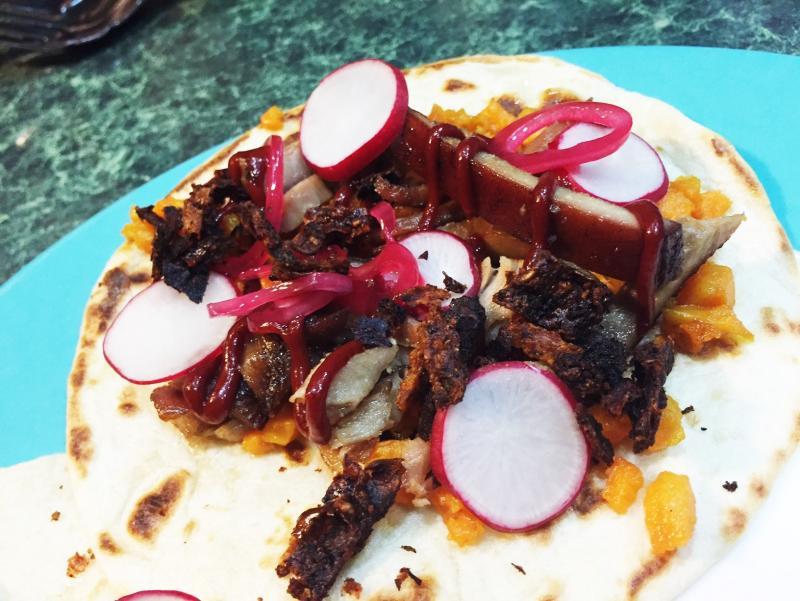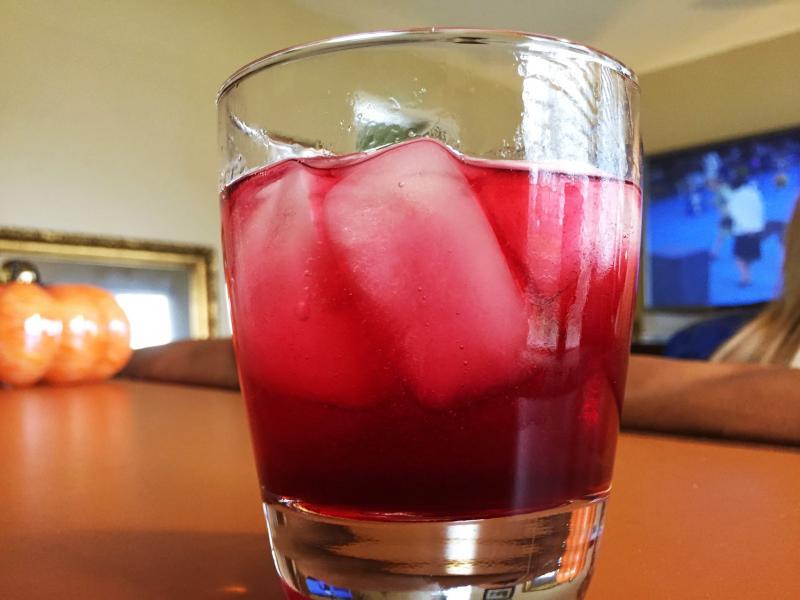-
Posts
1,807 -
Joined
-
Last visited
Content Type
Profiles
Forums
Store
Help Articles
Everything posted by btbyrd
-
People think they don't like turkey because: 1) They suck at cooking turkey 2) They buy garbage turkey with no flavor. 3) The turkeys they make, or their family makes, are dry and flavorless because of (1) and (2) 4) They cook turkey once a year - at most - because they think the crappy turkeys they make are the best that can be done. Which is why they suck at cooking turkey. These people typically also enjoy deli turkey, which is almost always a low-quality abomination. My extended family is full of such people, bless their hearts. Last year, they all brought about a billion side dishes "because Thanksgiving isn't about the turkey -- it's about the sides." I, of course, was in charge of the turkey. It was well prepared. Several people said it was the best they ever had. Only half of one breast was consumed. Americans.
-
As I was typing this, Anna beat me to the punch. But. If you want a soft boiled egg, soft boil an egg. It takes less time and will give you the firm whites you seem to be wanting. And it should be noted that I've never seen anyone advertise a SV egg as a close alternative to a soft boiled egg. A poached egg, sure. But not a soft boiled egg. You may have set yourself up for failure simply by having inaccurate expectations about the result. I don't know how you're eating them, but if you're using a "clacker" to do it and eating it directly from the shell... I'd just leave SV eggs alone. Best practice for serving SV eggs is to first crack them onto a plate or into a slotted spoon so that the loose whites will run off. Using fresh eggs can help things there, but you'll still have problems some of the time. There's always some percentage of egg white in low-temp eggs that's goopy and less than appetizing. Or you could boil your SV eggs for 3 minutes before-or-after their time in the bath to set up the whites. But that's silly. I'd just boil an egg.
-
And as always with SV fish... quick cure that stuff in sal-gar for 20-30 minutes before you get going.
-
TLDR: 110F for 40 minutes; unbag; hard sear. Long, fancy version involving duck bacon: Remove the skin. Dust with Activa RM and apply duck bacon. Vacuum seal and press overnight. Unbag and trim filets into portions. Immediately fry up any trimmings in butter or bacon fat and consume post haste. Rebag portioned filets and cook SV for 40 minutes. Unbag. Sear. Serve however. SV halibut+duck bacon "2 ways" - (1) hazelnut romesco with braised endive; (2) squash/tomato with orange and lemon vinaigrettes and chive/cilantro oil. Fish+bacon+meat glue: Glued, trimmed, and ready to portion. You know dem scraps were good, ya'll. Plate: Under no circumstances are you to substitute tilapia.
-
I'm with Dave Arnold on tilapia. He has some epic rants on it. I can't find my favorite one, where he calls tilapia swimming garbage that tastes like garbage because it lives in and eats nothing but garbage. But I remember vividly where someone wrote into Cooking Issues asking for a substitute for tilapia, and his response was : "Have you tried using dirt?" . In another episode, he joked that his New Year's Resolution was to get other people to stop eating tilapia. Because "there's got to be some other crap fish that they can grow in its own filth for almost no money that tastes better. There's got to be something." For any given application, there are 15 other fish I'd rather use first, and if tilapia was the only available option, I'd cook chicken instead. My pro-tip for tilapia, apart from not cooking it at all, is to heap mounds of spice and gallons of acid on it. Tilapia either tastes like nothing at all or it tastes like dirt. Actually, to be fair... tilapia themselves only taste like nothing. The dirty taste is caused by cyanobacteria that breed in the fish's environment and secrete nasty flavor compounds that get uptaken by the fish. Mmm mmm good. Anyway, the "blast it with cayenne, cumin, lime juice and vinegar" strategy solves both the "tilapia tastes like nothing" problem and the "tilapia tastes like dirt" problem.
-
I also do a slaw-like thing based on shredded brussels sprouts. The easiest way to get going with that is to buy pre-shredded ones from Trader Joe's (or wherever) and pick through the bag to remove the larger chunks. Then cut everything else up into matchsticks (a task made easier with a mandoline). This was sprouts, granny smith apple, and watermelon radish, tossed with shaved parm and a pomegranate garnish. The dressing was TJ's dijon mustard, raw honey, apple cider vinegar, and a tablespoon or two of mayo. The only issue is that you have to toss it a la minute, or it'll sog-out on you. But when it's fresh, it's crunchy and bright and delicious.
-
This is some good stuff. The consomme itself is intense -- bright and clean and flavorful and a little sweet. Store-bought "cranberry juice" is a pale imitation. I find new uses for this each year. I think I'm going to do a gellan-based "cranberry sauce" this year. I might even set the gel in a can so I can unmold it and it'll look like a can of Ocean Spray. The yield sucks, and you're going to feel bad about all the softened cranberries you throw away. But that's life without a centerfuge for you. (I did make a cranberry "bbq sauce" once with some spent berries... it was alright.) There's also no need to use a circulator... boil-in-a-bag works just fine (or better)/. Weigh your bags down. Cranberries be like: WE ALL FLOAT DOWN HERE! Comic Sans makes everything scarier. Even cranberries. Anyway, the obvious use is for cocktails and mocktails. This guy was 1.5oz cran, 2oz gin, a dash of simple, fill with seltzer. (You can see the National Dog Show in the background, so you KNOW it's Thanksgiving.) This was a Thanksgiving "taco" I did with smoked confit turkey thigh, sweet potato, turkey skin cracklins, radishes, bbq sauce, and pickled onions. The onions were pickled in the cranberry consomme and they look and taste awesome. The sauce is that BBQ sauce I mentioned. I don't really remember what went in apart from spent cranberries, molasses, and paprika... but it took a lot of doctoring and experimentation to get it right.
-
I'm mostly on that 13-to-14-minute 75C egg tip recently. Yields a slightly firmer white than "usual" SV eggs and takes a fraction of the time. But yeah, SV eggs aren't "poached eggs" and if you want a poached egg, you should poach that egg. A poached egg on a salad? YES! A SV egg on a salad? GROSS! But on a benedict? Who cares. I hosted a Mothers' Day brunch for my family this year and did benedicts for 8 people. I would not have done that without a circulator. I could have. But getting 16 poached eggs hot and ready for service isn't my idea of a fun challenge. SV eggs also make perfect "onsen" eggs for ramen. My mother HATES eggs. She never eats them. Unless I make them. And one of her favorite things in the world is a 63C yolk. Last Christmas she asked me to SV a dozen eggs for her to enjoy in my absence. I keep telling her to get a Joule so she can have eggs whenever she wants. Still hasn't happened...
-
Dave Arnold mentioned that he recently attended a kitchen trade show in China and was amazed by the number of knockoff circulators. I have no idea why you'd buy one of these as against one of the proven models already on the market (which are roughly the same price). The SVE guys are goons. I will never be able to take them seriously after seeing their video about using garlic SV. I won't bother to link to it, since it's not worth watching.
-
I'm kind of kidding. I can't be the only person who has put a smoothie in their chamber vacuum to pull out excess air. And I KNOW that I'm not the only one who has put a fluid gel into a chamber vacuum to get the air out added by blending. But as far as the supposed health or nutritional benefits of vacuum blending vs ordinary blending go.... I'm going to file those claims under "Snake Oil." FWIW, if I was going to get a vacuum blender, the Tribest would be my choice. But that ain't never going to happen because this is a stupid product category.
-
Cooking food is unnatural. We should follow a raw, vegan diet. And if you don't blend your plants under vacuum, you'll get autism. Want to buy a crystal?
-
8 inches. Which is plenty for most things. If you need more, you can use the clip... but apart from my stock pots, I don't have a magnetic vessel in my kitchen that's taller than the Joule. The nice thing about the minimum water depth is that you don't have to drag out a huge container to cook something small. (And you wouldn't be using the magnet to cook anything big anyway.) I can "poach" eggs for myself in a 1 quart pot, or a couple steaks in a 4-quart pot. Previously to do a couple eggs for myself, I'd use the Polyscience with an 8-Quart Cambro -- and even that wasn't quite big enough. Being able to run Joule with very little water means that the bath is ready in no time, and you can pretty much just grab whatever container you want. For real. People always say "You can SV in anything really.... just use a pot!" but it's not really true. When you clamp a circulator to the side of a pot, it's going to eat that pot. It's going to be giant and look stupid. That doesn't happen with Joule. It's so small that you need to descale it, you run with some vinegar inside a Mason jar. A freaking jar! For me, the magnetic foot and the ability to use low water levels is less about cooking in just an inch (and a half) of water and more about just being able to use whatever vessel you want without having to think about it. I used to think that the CS gang was being weird when they'd use Joule in SS pots and dutch ovens and enameled cast iron containers all the time, rather than using big ol' polycarbonate containers. But it makes sense to me now, having had a Joule for almost a year. I don't find myself needing to break out big Cambros for SV cooking anymore (big things and batches aside) but most often just reach for a pot (or a small Cambro).
-
The only advantage that stainless would offer over the extruded polycarbonate housing is aesthetic. Stainless housings on other circulators make them easier to clean and maintain than the same circulator made out of plastic. And that also makes them more durable. But neither of those advantages would transfer over to an all-metal-housing Joule. It'd look pretty cool though.
-
The Joule's plastic housing, impeller, and machining is as nice (or nicer) and easier to clean than my $799 Polyscience circulator. The heater is specially engineered and has a radically different design from everything else on the market. And it's waterproof. And smaller. And lighter. And magnetic. And it disassembles oh so nicely. And you can use it with almost no water. And it doesn't eat up the container with its giant profile. And it's quiet. So long story short... no. I don't care that it has a synthetic housing. It's a quality synthetic housing. Metal wouldn't make it better, just different.
-

Ruhlman / Dalton Spoons, Utensils, and Kitchen Accessories
btbyrd replied to a topic in Kitchen Consumer
Wait until the holiday sales and order big. I'm going to get 2 or 3 more sets of the bent spoons this year. I've never ordered not on sale. It's the only way to make up for the crazy shipping. I'll add that since my original post, I've bought and used all the Kunz spoons, but much prefer the Ruhlmans. -
When I started out with SV, there was only MC and Doug Baldwin's website. Chefsteps was just starting up, and soon became the best online resource for learning about cooking sous vide (and cooking in general, to be honest). Nowadays, you can buy a Joule that comes partnered with a smartphone app that has a ton of recipes and a "visual doneness" feature that's second-to-none. That's what I recommend to people who are new to SV -- or even who are looking for their second (or third) circulator. You can use the recipes as much or as little as you want. For my part, I almost never use the in-app recipes, but that's mostly because I already spent a few years cooking SV by following ChefSteps videos and recipes. But if you're new to SV, it's an excellent tool -- both as a circulator and as an excellent learning tool (in the app). I'm pretty sure you can DL the Joule app for free and use it without a Joule. Or just use their website, which is excellent. But Joule is my favorite circulator out of all the circulators, so if you haven't struck out yet -- it may be the one to get.
-
MC@H, fo' sho. That's "Modernist Cuisine At Home," if you're not hip to the lingo.
-
Anryu stainless clad super blue
-
I can't stress enough the importance of a really hard pre-sear on the meat and vegetables for pressure cooked applications. A boatload of the browning and "roasty" flavor comes at the very beginning of the process. In my experience, the "searing" function of the IP isn't really up to the task. I use a large, wide pan on the stove and work in batches. And on another note, be sure that if you add any wine to your PC braises, you reduce it first to concentrate the flavor and drive off the alcohol. Since there's no evaporation in the PC, whatever booze you put in, you'll get back later.
-
The things that you traditionally cook slow and low are things that are traditionally cooked to death. Often, that means tough, collagen-filled cuts of meat. The reason that these are cooked "low" is that, because they are braises the meat is in a moist cooking environment and using a hotter oven wouldn't bring any advantage. Your oven might be at 500F, but the meat in your braise isn't going to get above 212F if it's submerged in liquid. Pressure cookers allow you to cook in a moist cooking environment but at a higher temp than you could in an oven (or anywhere else at normal atmospheric pressure. Because the water gets so much hotter when you're pressure cooking, foods break down much more quickly than they do when using a slow cooker or doing an oven braise. Both cooking methods are (often) about breaking down collagen using heat and time; it's just that the time is longer and the heat lower when you're doing a traditional braise. Apart from the time and temp difference, the key difference between an oven-braise and a PC version is that there's no evaporation/reduction in the pressure cooker, and the top of the meat above the liquid doesn't get as crusty (if that's what you're into). That also goes for exposed veg, which won't get as brown. A way to improve the flavor of PC braises is to strain them after cooking and reduce the cooking liquid by half to simulate the effect of long evaporation. That's usually what I do. I brown the meat, add stock, pressure cook, strain, and then reduce the liquid. In the meantime, I roast vegetables in the oven. When everything's ready, I toss the meat together with the sauce and the vegetables and hold it at "keep warm" for a while to let the flavors come together.
-
The recent acquisitions. The sayas for the yanagi and the k-tip are perfect, but the petty's is a little loose. It was clearly built for a bigger blade, which makes sense because it didn't come with one and they said they'd basically either find or make one that would fit it. Considering drilling a new hole for the pin...
-

Looking for information on smaller chamber vacuum machines
btbyrd replied to a topic in Kitchen Consumer
Even the "smaller" ones are large and heavy though. Plan out a permanent spot. I keep mine on a shelf; I know some others have theirs on carts with wheels. Still others keep it in the garage or basement. Here's my rack o' gear, with the VP112 taking center stage: -

Looking for information on smaller chamber vacuum machines
btbyrd replied to a topic in Kitchen Consumer
I have the Vacmaster VP-112. Most home users opt for the 112 or the 215. The 112 is lighter, has a shorter profile, and has a dry-piston pump that's maintenance free. The 215 has a pump that requires the occasional oil change, but it pulls a slightly stronger vacuum and it will last longer because moisture that gets sucked into the pump ends up in the oil, not in the pump itself. But it costs more, weighs more, is taller, and requires the occasional oil change. They can both do vacuum compression/pickling and all the other modernist tricks. One's just bigger, heavier, burlier, and requires the occasional maintenance (and is slightly more expensive). Both should last a home user for a decade or more. -
This is awesome. I just ordered a nakiri made by this man (the following clip is also in the documentary): The film was put together with Knifewear, a Canadian importer of Japanese kitchen steel. But the Anryu knife I ordered was from Japanny's shop in Portland. Hammered tri-clad super blue. Oooooh la la....
-
Nope. But that k-tip gyuto (or whatever) is Damascus blue steel #2. The yanagi is unpatterned white steel #2 with the kurouchi finish on the front (and a "naked" back, which is traditional). I will say that unless you're going to slice a lot of fish (or can buy both) it might make more sense to invest in a sujihiki over a yanagiba (if you're thinking about getting a slicer). My ultimate plan is to get a suji made from VG10 (or other stainless alloy) to use as more of a "western-style slicer." I already have a good, cheap, fibrox-handled stainless 12" slicer/carver that can do the job for now. And it's probably the best thing for cooked crusty meat anyway.




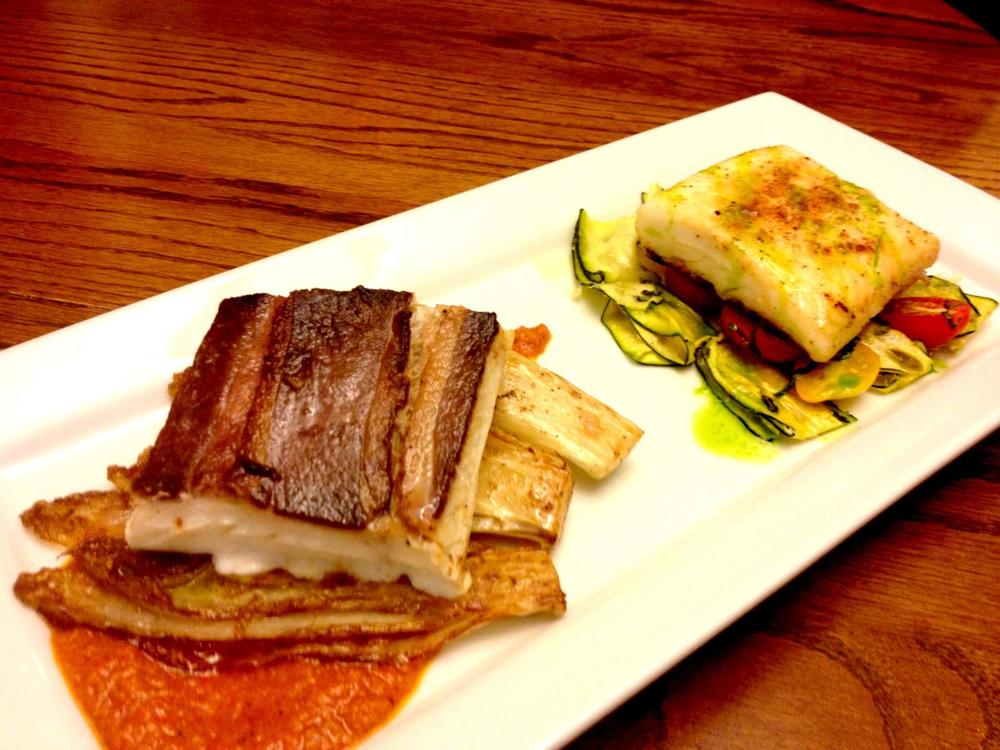
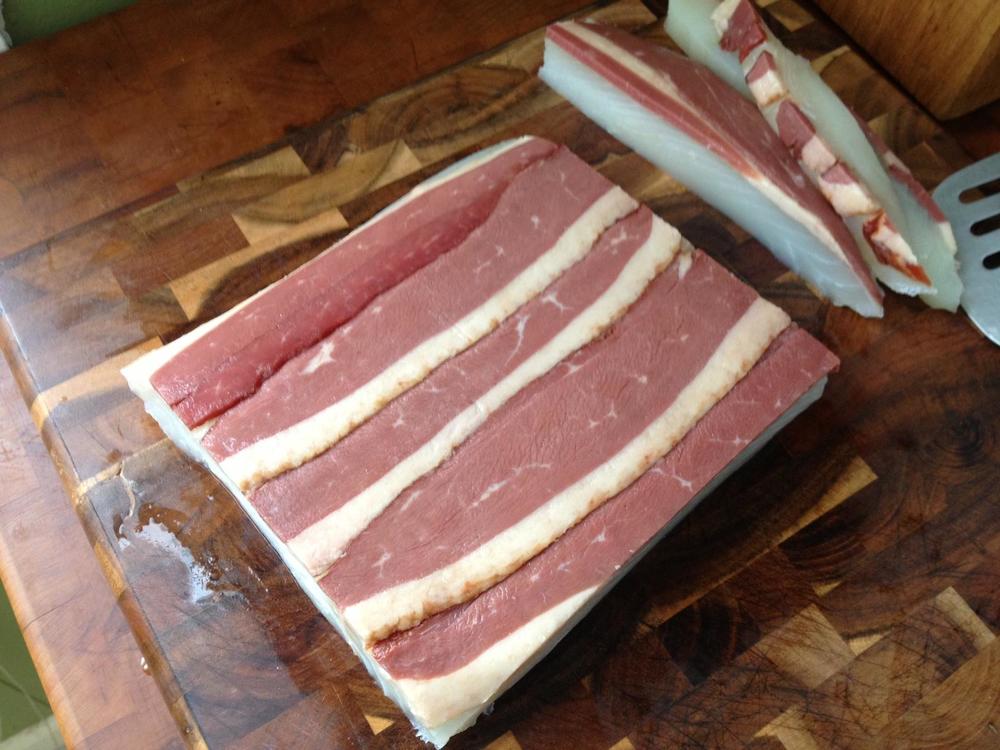
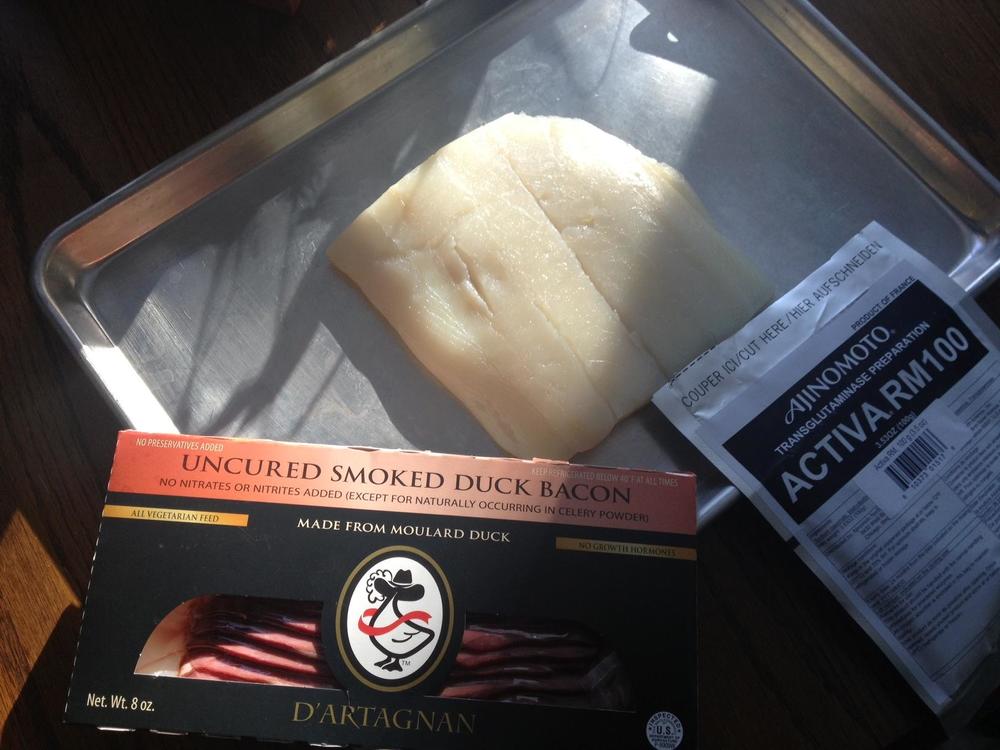
.thumb.jpg.967f5eb7a3f45f56d65a5d677897b402.jpg)
